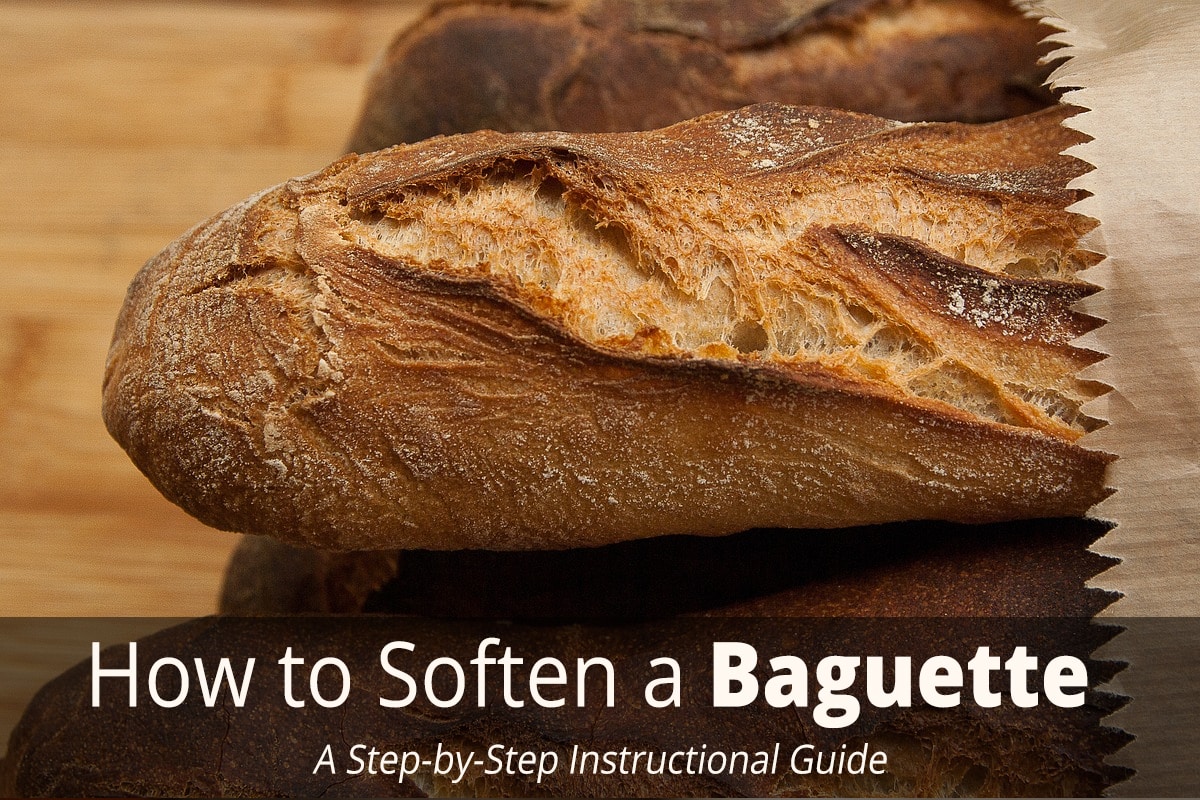
You never realize how short a baguette’s life span is until you buy one thinking it’ll last the week.
I figured French bread was just one of those “eat it fast or forget it” foods, soft and perfect the first day, slightly stubborn the second, and rock-hard by day three. Honestly, I was never a big fan because of that.
Then I went to Paris. Every bakery sold fresh baguettes daily, and by nightfall, they were already crisping up. When I asked a baker what to do with the hard ones, he said:
“It’s not dead. It just needs steam.”
That changed everything.
Why Baguettes Go Stale So Fast

What I learned in France is that baguettes are built for immediacy.
They’re made with lean dough, just flour, water, yeast, and salt. No butter, oil, or preservatives. That’s what gives them their crackling crust and open, airy crumb, but it also means they dry out fast.
Once the steam inside escapes, the starches begin to crystallize, and your perfect loaf turns rigid. This isn’t “bad bread,” it’s just real bread. The French expect it. That’s why you’ll never see baguettes sealed in plastic, they’re meant to be bought fresh in the morning and finished by dinner.
A Quora baker explains it perfectly: baguettes aren’t built to last. Enriched breads with fat or milk can stay soft for days, but lean French doughs are good for just one. Slow fermentation brings flavor and sweetness, not longevity.
If you want to dig deeper into why bread stales, Red Star Yeast does a great explainer on the starch retrogradation that causes it.
How to Soften a Baguette with Steam (The French Trick That Works Every Time)

It turns out the secret to reviving hard bread isn’t magic, it’s steam. A splash of water and a few minutes in the oven can turn a rock-solid baguette soft and chewy again. It’s the same simple trick Parisian bakers swear by, and once you try it, you’ll never toss stale bread again.
The Classic Parisian Fix (Water + Oven)
This is the one that made me rethink everything.
I watched a Parisian baker do this in what looked like an act of madness, he ran a stale baguette under the tap. Full on, just a few seconds of running water over the crust.
Then he threw it straight into a blazing-hot oven.
And somehow, five minutes later, that bread came out like new. Crisp shell. Steamy inside. Heaven.
That’s when it all made sense.
Here’s how you do it (without panicking):
- Preheat your oven to 350°F (175°C).
- Run the baguette quickly under cold water, don’t soak it. You’re just wetting the crust.
- Place it directly on the middle oven rack (no foil, no tray).
- Bake for 5–10 minutes until the crust feels crisp again.
The oven turns that surface moisture into steam, rehydrating the interior. When you crack it open, you’ll see the magic.
A tip I learned: Eat reheated French bread within 15 minutes. Once it cools again, it’ll firm up, the starches re-crystallize as it loses heat.
Here’s a great short video that shows this method in action.

The Quick Fix: Damp Towel + Microwave
Let’s be honest, sometimes you’re not channeling your inner French baker at 9 p.m. You just want to make a sandwich.
This microwave trick isn’t elegant, but it works fast. I learned it from a friend who swears by it during soup season.
- Dampen a clean kitchen towel with warm water (not soaking wet).
- Wrap the baguette or a section of it in the towel.
- Microwave for 15–30 seconds on high.
- Check, if it’s soft but not hot, you’re good. If not, give it another 10 seconds.
It’s not a long-term revival, the bread will harden again in 10–15 minutes, but for a quick, steamy bite? Perfect.
Don’t overdo it. Too long in the microwave and it’ll turn rubbery instead of soft.
The Steam Trick (If You’re Cooking Anyway)
If you’ve got the oven going already, maybe roasting veggies or chicken, toss your baguette in for a couple minutes near the end. But here’s the twist:
Sprinkle a few drops of water on the baking sheet or place a small oven-safe dish with water beside it. The steam will gently refresh the crust.
This is my go-to move when reheating leftovers or prepping dinner. No extra work, no waste, just French-level thrift.

How the French Taught Me to Love Day-Old Bread
Here’s the part the internet skips. In Paris, no one freaks out when their baguette hardens, they just transform it.
Day-old baguettes become:
- Pain perdu (literally “lost bread,” a.k.a. French toast)
- Breadcrumbs for gratins or pasta
- Thickened sauces or soups like French onion soup
- Rustic salads like panzanella
In other words, a stale baguette isn’t the end. It’s the start of something else.
If you want to see this in action, Thank Me Later has a great piece on creative ways to reuse bread.
What Not to Do
Some lessons I learned the hard way:
- Don’t microwave it dry. You’ll turn it into a brick, fast.
- Don’t soak the interior. Moisture should stay on the crust only.
- Don’t reheat twice. Each cycle steals more moisture until there’s none left to revive.
And please, don’t store baguettes in the fridge. The cold accelerates staling. Wrap them in paper and keep them at room temperature for a day, or freeze them if you won’t eat them soon.